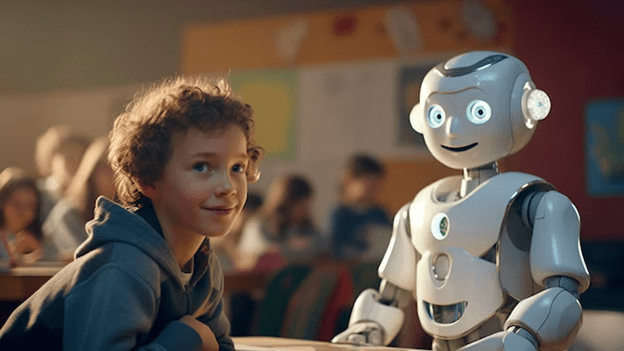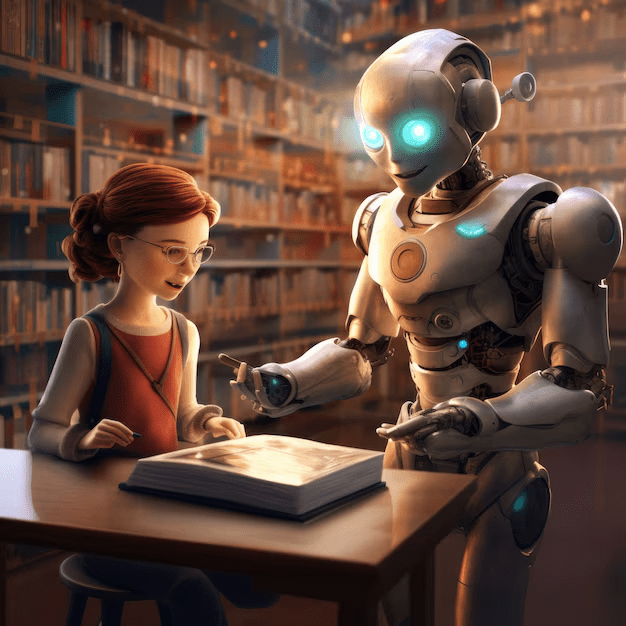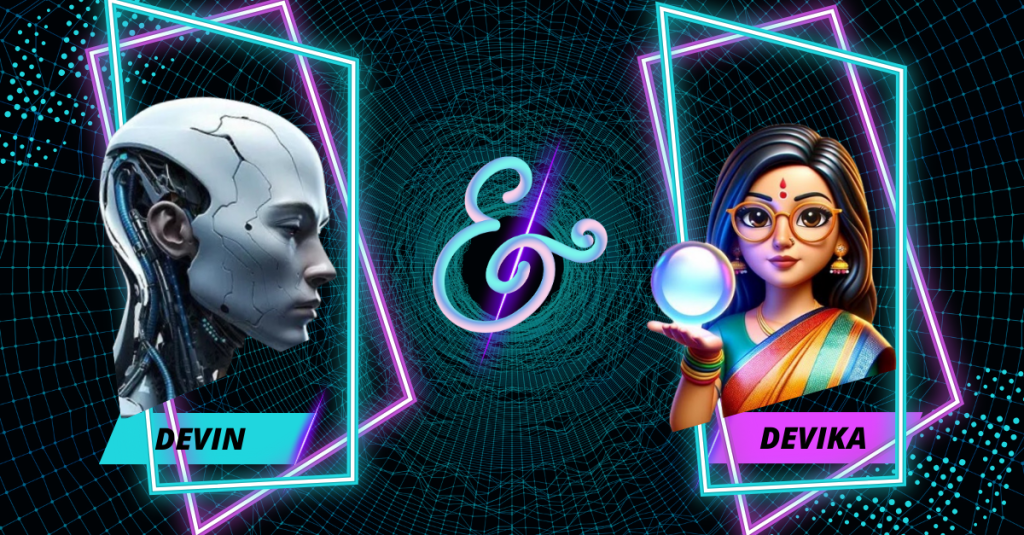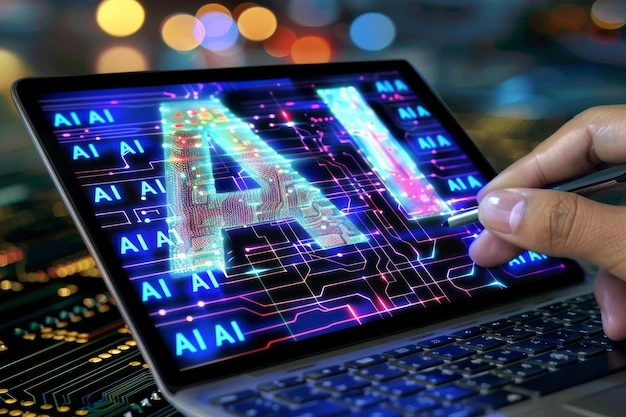In the 21st century, industries should consider the advancement of technology, and Artificial Intelligence in education is revolutionizing every field, with education being one of them.
AI in education is not a fad. It is an evolution in the field of education.
AI technologies have more than one application in education. It is changing the conventional mode of teaching, enhancing the effectiveness of learning, and also promoting the effective use of a wide range of resources.
But what does this mean for educators, students, and the concept of education and politics in the foreseeable future?
The focus of this article will be on how AI has been revolutionary in education. We investigate how AI helps in education to develop inclusive education.
However, we also demonstrate why AI is useful in education. And we consider what prospects are there for AI in education.
In this article, whether you are an educator, student, or a keen follower of the emerging trends in AI and education, you are welcome.
As such, we will outline the current situation and expected trends in AI use in education.
Hence, we will address the implications, dilemmas, and some consequences of such alterations in educational investments and governance structures.
Thus, come with us and let us explore how AI can change the way we learn.
Let’s get into the use of AI in education.
Role of AI in Learning Systems
The implementation of Artificial Intelligence (AI) has changed the dynamics of many industries. The education system is no exception.
The emergence of AI in teaching has opened up new possibilities for innovation. It has changed the former status quo of teaching and learning.
Artificial Intelligence – What does it mean? Is it related to the learning process?
But what is AI in education in this case? To put it simply, what is the definition of AI?
In short, at least what is common in all of the devices, the use of AI in education is when machines or programs imitate human reasoning. They can learn from various situations, understand new things as well, and think.
When applied in education, AI can be very beneficial. It can provide tailored learning experiences, streamline evaluations, and offer constructive critiques spontaneously.
AI can also assist in determining the learning deficiencies of students and consequently, modify the methods adopted for teaching the same students.
Historical Context of Use of AI Technology in Classrooms
However, this did not happen by itself. The integration of AI into education was not brought in overnight. It has always been a progressive development.
The very first wave of AI-driven education came along with the introduction of computer-based instruction determined back in the 1960s and 1970s. Later on, it came to be followed by intelligent tutoring systems in the 1980s and in the early 1990s.
The expansion of the Internet and the emergence of big data in the 2000s were the foundations for the unfolding trajectory of AI in today’s educational institutions. This encompasses adaptive learning technologies, intelligent tutoring systems, and analytics on the educational process.
The path of AI in education is not yet over. Even so, it can be predicted that the future will be much brighter for AI technology in education with proper technological advancements.
Current AI Applications in the Classroom
AI applications are not only used for the purpose of imagination. These technologies are being assimilated and incorporated into the learning environment.
AI-based instruments facilitate learning during classes. They can change the course of study according to how fast a child is able to grasp.
For example, AI applications can profile students’ learning. After this, they can modify the specifics of the content to be presented according to how fast each of the students is at learning.
Scaling is another challenge that AI has the potential to solve, such as assignments, exam grading, and providing feedback.
This gives more time for the teachers to deliver lessons and reduces the caseload.
Modules and Instruments of Education Enhanced by AI
A lot of tools and other devices today are available that are a force behind the learning process. These tools are aimed at the improvement of the process of learning.
For example, tutoring systems that employ AI offer students specialized learning experiences. They are responsive to a particular student’s learning preference and offer them instant correction.
Another application of AI in education pertains to supporting active engagement with the students. For example, educational games built on AI technology can make the learning experience more interesting.
Language acquisition is another area where AI can aid in the process. Language apps using AI technology facilitate faster language learning with practice modules.
This is just one example of AI in education and its application in educational activities. There is no limit to the number of such examples.
Case Studies: AI Integration Success Stories
There are several examples where AI has been integrated into education successfully. These examples indicate what a revolution AI has brought about in learning.
To illustrate, one such example is Georgia State University, where an AI chatbot was created to answer student questions. It managed to cut summer melt by 22% thanks to the chatbot.
In another case, the University of Sydney reversed the situation through the use of AI to predict student performance. The effectiveness of the AI tool was in flagging out students with low grades.
These success stories highlight how far AI can go in the education sector. They demonstrate why there is a need to incorporate AI into educational activities.
Nonetheless, there are hurdles in the way of educational advancement with AI. It is quite an undertaking that involves design and execution. But with the right approach, the rewards can be worthwhile.
Using AI Technology to Help Us Teach Every Student According to Their Needs
Education itself is improving. It is changing for the better and becoming more tailored to every individual learner.
AI can study how a student engages in learning activities. Then it can adapt the learning materials to fit that particular student.
Learning materials can be effectively designed using this method. It can also enhance their motivation toward the learning process.
AI can also give students instantaneous feedback. They will also assist students in seeing their areas of strength and weaknesses.
In addition, AI can also allow teachers to know their students better. AI will help in knowing what type of learning actually worked for a child and where they are in their growth.

Accepting and Exploiting Natural Differences In Learning
Every child is different and learns differently. Some learners would prefer to look at pictures, while others like to listen, and still others prefer practical work.
AI can act on variations of this nature in the learning process. It can help in providing learning experiences that are tailored to the different requirements of the learners.
For example, AI would track how the student interacted with the learning content and would switch the learning content according to the preferred learning needs of the student.
This approach will enhance the learning process. In this way, students can understand new ideas in a shorter period and remember what they have learned for a longer time.
AI for Special Needs: Changing the Discourse
Education interaction environments can also be improved with AI technologies. It can help students with disabilities in the learning process.
For instance, they can use AI-based applications for children with dyslexia. They may include voice features and vice versa.
AI can also be beneficial to students who suffer from loss of eyesight. It may be converting written text to a Braille display or providing audio explanations for visual concepts.
Also, AI can help children on the autistic spectrum. It can provide social skills training using games and simulation techniques.
These tools can assist in breaking down barriers to education. Every child, without exception, will be helped and educated.
The Impact of AI on Assessment Feedback
Assessments and feedback are an important aspect of the educational experience. They are used to determine a student’s performance and their learning. AI is changing how assessment and feedback take place.
AI has the capability to take coding classes on its own and without the need for parents to assess it. There are many capable assistants and analysis tools, but unfortunately, today’s systems have so many grade levels and grading is often less than optimal.
Grading and Feedback Automation
Grading is one big task that takes a lot of time, especially for teachers. This barrier is slowly easing as a result of AI integration.
Tools powered by AI are capable of creating and grading multiple-choice and fill-in-the-blank questions. They can even assess written answers to some degree.
These tools provide feedback instantly. This enables the learner to know the errors made and the corrections required.
Checking Progress and Predictive Analytics
AI can also keep track of student progress. It is able to evaluate how well a student’s performance changes over time.
Such analysis can also offer insights regarding how a student progresses in learning towards a particular goal. It can assist in pinpointing problematic areas for the learner.
In addition, AI can use predictive analysis to estimate how well a student might perform in the future based on their current performance. This is useful because it allows teachers to act early if a student’s performance is deteriorating and provide the necessary support.
Taking into account some ethical issues arising from AI and Privacy in Education
The implementation of AI in education brings up ethical and privacy issues. As AI systems collect vast amounts of student data, it is critical to consider how this data is handled.
Data privacy becomes very important here. Schools and educators need to ensure that student data is not misused.
Additionally, the ethical use of AI must be taken into account. AI should not replace the human element in education, but rather enhance it. The focus should be on ensuring that AI technologies are used to benefit students rather than to create obstacles.
Educators and policy-makers need to set clear guidelines on how AI should be used in education. The goal should be to ensure that AI is used responsibly and ethically in the education system.
AI Technology Changing the Way We Think About Learning
AI in education has the potential to transform how we think about learning. AI systems can offer insights into how students learn and what methods are most effective.
They also make it easier to customize learning experiences to meet the needs of individual students. AI allows for a more dynamic and adaptive learning environment where the focus is on helping every student succeed.
With the right balance of technology and human interaction, AI can revolutionize the education system. It can help us create an education system that is more inclusive, effective, and tailored to the needs of every student.
Let’s embrace AI as a tool for enhancing education. Let’s ensure that it is used in a way that benefits all students and prepares them for the future.
The Future of AI in Education
What lies ahead for AI in education? The future of AI in the education system is promising, but it is not without challenges.
As technology continues to advance, AI will play a larger role in education. However, educators must remain vigilant to ensure that these technologies are used ethically and effectively.
The goal should be to create a learning environment that is inclusive, adaptive, and focused on helping every student succeed. This will require collaboration between educators, policymakers, and technology developers.
If we can achieve this, the future of education will be brighter than ever. AI will help us create a system that is more responsive to the needs of every student and more effective in helping them achieve their goals.
Final Thoughts on AI’s Role in Education
The potential of AI in education is enormous. It offers the possibility of transforming how we teach and learn.
However, this transformation will require careful planning and consideration. We must ensure that AI technologies are used in a way that benefits all students and helps to create a more inclusive and effective education system.
With the right approach, AI can help us achieve these goals. It can help us create an education system that is more dynamic, adaptive, and focused on helping every student succeed.
Let’s embrace AI as a tool for enhancing education and ensure that it is used in a way that benefits all students.
Wildnet Technologies has been catering SEO services to our clients for 17+ years.
Recently, we have started using AI in our digital marketing efforts, and to our clients’ delight, the resultant marketing campaigns have gotten better!
We also excel in AI solutions via our software consulting services.
FAQ
Q1. How is AI applied in education?
In education, AI is applied in personalized learning, automation of education administration, and customized intelligent tutoring systems.
Q2. What are the predictions for AI in education?
The possible developments to look forward to concerning the use of AI in education includes more focus on personalizing learning experiences, further encouragement of inclusivity together with the use of AI to gain insights on educational achievements and how to better them.
Q3. What are the benefits of AI in Education?
AI can enhance education by ensuring that learners get achieving virtual education experiences, get real time responses, and teachers help students overcome challenges they face individually.
Q4. Why is AI considered a game changer in education?
AI is changing education by enhancing learning that is flexible, engaging and efficient where students control and progress through their study and teachers are relieved to concentrate on fruitful engagements.
Read more:
Motorola walks the runway with entirely AI-generated campaign
Perplexity AI: What It Is and How to Utilize Perplexity AI in Modern Business
Top 10 free AI to human text converter tools
Will AI replace SEO with the emergence of AI Search Engines?






